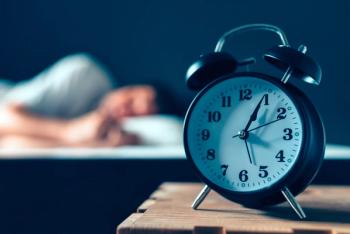
Cognitive Behavior Therapy and Medication-Assisted Treatment for Opioid Use Disorder
How can this combination of treatments help create positive change for individuals struggling with addiction?
The use of opiates and resulting overdoses continue to grow.1,2 Research shows that medications can be useful for curbing cravings and preventing the misuse of narcotics.3 Even though medications have proven helpful, the lack of motivation to change and the incentives for diversion limit treatment compliance.4,5 Individuals’ inaccurate and unhelpful beliefs about themselves and about substances often interfere with positive change.6 Cognitive behavior therapy (CBT) has been found to be helpful when used together with medication-assisted treatment (MAT).7-9
One of the problems individuals experience when misusing substances is the powerful immediate reinforcement they receive from taking the substance. Indeed, one of the primary reasons people use substances is the immediate reinforcement which, in the moment, is much more compelling than the long-term negative consequences of continued use. By the time most individuals voluntarily talk to an addiction specialist, they have likely experienced negative consequences, including diminished pleasure, negative side effects, and negative social consequences.
Key Techniques in CBT for Substance Use
Individuals who come to treatment are often conflicted. On one hand, they have experienced negative consequences; on the other hand, they are unable to imagine that their lives could be different or better. In CBT, we work with individuals to help them change the trajectory of their lives by placing a renewed focus on the things they value. We help them imagine how their own lives could improve if they were to pursue aspirations that are aligned with their personal values. When individuals place a renewed focus on their values and personal aspirations, they can connect the short-term and long-term consequences of their actions. Individuals find motivation to change their old habits and participate in healthier activities.
With a newfound desire to make changes in their lives, individuals need to make what are often difficult decisions. In CBT, we support individuals in making decisions by doing a cost/benefit analysis. The cost/benefit analysis helps elucidate the relative positive and negative elements of engaging and not engaging in a particular action. By conducting a cost/benefit analysis, individuals gain clarity about the things they value. Accordingly, individuals may make decisions about people with whom it is in their interests to associate, which places to frequent to further their goals, and what things they can do to help them move in a positive direction.
In the throes of addiction, individuals often lose their ability to manage their schedules. In CBT, we help individuals develop schedules with a focus on 2 types of activities. One type of activity increases their level of mastery of things they either need to do or want to do. These activities could include everything from basic hygiene to developing expertise in a profession. The second type of activity increases a person’s experience of pleasure, without engaging in substance use. Individuals who suffer from addiction have often lost their ability to experience pleasure when not using drugs. A CBT therapist will help individuals select activities that match their interests and include them on a master schedule designed to include all the different activities they need to do. Having scheduled activities allows less time for the individual to seek out and use substances. The feelings of mastery and pleasure serve as positive reinforcement for engaging in the various activities.
When individuals are caught up in the dynamics of addiction, they often develop negative beliefs about themselves and their abilities. This can lead them to have negative expectations that become self-fulfilling prophesies when situations play out as they predicted. After a person engages in activities that increase their level of competence and pleasure, they gather evidence that contradicts their formerly held beliefs about themselves and about substances. The newly acquired evidence starts a cycle of reinforcement based upon positive assessment, statements, and feelings about themselves. Repeatedly engaging in activities that give them a sense of competence and/or pleasure, combined with positive experiences, lays the foundation for creating new beliefs about their capabilities and capacity for positive feelings.
The continuous use of substances over an extended period can cause a person to become numb to life’s events. Once an individual gives up using substances, the renewed experience of having feelings can be unnerving. Managing emotions can become an important target for therapy. Developing a routine sleep schedule, engaging in healthier eating, and moderating physical elements of emotions may all help an individual learn to better control their feelings. Relaxation techniques, mindfulness exercises, or other activities such as yoga, prayer, and meditation can be very effective ways of helping people tolerate and manage their experience of feeling emotions that they have not felt for a long time. These techniques can be used with people from all walks of life and with varying histories related to substance misuse.
An Illustrative Case Example
“Maria” was a 22-year-old college student when she was referred for treatment following her arrest for drug possession and distribution. Maria had excelled academically and in multiple sports during high school. She went to college on a softball scholarship and planned to become a physical therapist. Following her freshman year, Maria tore her rotator cuff. Initially, she thought it was a minor injury and continued to play and work out. The tear got worse and, despite surgery, ended her ability to play softball at the college level. The injury was devastating to Maria because not only could she no longer play sports, but she lost her scholarship, had continuous pain and disrupted sleep, and became depressed as a result. She struggled to keep up with her studies. Her greatest relief from the physical pain and emotional upset was the oxycodone she was given following surgery. Her depression made it difficult for her to fully engage in treatment, and although her doctor recommended ibuprofen and alternative treatments, she continued to request the medication. After several months, her doctors discontinued the opiate medication.
Maria, in the meantime, had connected with others who were able to provide street drugs to fill her increasingly greater need for relief. When she was cut off by her doctors, she turned immediately to her friends. Eventually, she expanded her network of people from whom she could acquire and with whom she would share drugs. This eventually led to her arrest. Maria’s relationship with her parents and her old friends suffered along the way, and her parents were very concerned about her. They expressed a desire to help her find solutions. Maria’s attorney referred her for CBT treatment after her arrest and before any court appearances.
Initially, Maria was friendly and expressed a desire to participate in treatment. She was quite clear, though, that she did not know how to get along without opioids. Maria felt responsible for getting herself into her current predicament and felt helpless; she thought her future was hopeless and that she had lost any measure of worth. Rather than reminding her of what she had lost or lecturing her about the consequences of her continued drug use, we started therapy by focusing on the things that were important to her before her injury. Sports, academics, family, and friends were always important to her. They all seemed intricately linked to one another, and her injury seemed to take away everything she cared about.
Acknowledging the losses and the difficulties she had experienced, we talked about what her life could be like if she was able to reclaim the things she valued. Her family and academics were still important to her, and although she could not play softball, she was still capable of exercising. In session, we had her imagine that she finished school, renewed her relationship with her parents, and engaged in tolerable levels of exercise. She did not believe that she could be a physical therapist and switched her major to occupational therapy. Her vision of her aspiration served as a strong motivator to get her life back on track.
Still, Maria could not consistently resist her cravings for drugs. We taught her relaxation exercises that she found helpful for her emotional state and calming her urges, but they were not universally effective. We talked about the possibility of medication to help with her cravings. She and her parents had concerns about relying on medications to resolve medication issues, but after doing a cost/benefit analysis of the advantages and disadvantages of trying the medication versus the advantages and disadvantages of not trying the medication, Maria decided to give it a try. The medication had both agonist and antagonistic properties that worked well for controlling her urges and, to some extent, helped with her lingering pain. With those benefits, we then discussed other alternative treatments for pain that included ibuprofen and physical therapy. When Maria gained control of her urges with medication, she felt stronger.
After receiving relief from physical pain and urges to use, Maria was better able to concentrate on achieving her desired life. Initially, she found it challenging to manage her time. We worked together on an activity schedule to make time for her classes and homework. For Maria, it was important that she have a schedule that made time for her parents and other supportive friends, exercise, a routine sleep schedule, and healthy eating. As she followed her schedule and became more active, she felt more confident and competent. She changed the way she thought about herself. Rather than thinking of herself as being helpless and worthless, she recognized the power she had to do many good things with her life and felt increasing more worthwhile as a person.
It had been 3 to 4 years after Maria’s rotator cuff injury when she was referred for CBT treatment. Simply stated, for a variety of reasons, she had deviated from her previously successful path in life. With about 12 months of CBT and medication, she was able to get her life back on course. At that point, she had been accepted into an Accelerated Rehabilitation Disposition (ARD) program of the court, had completed her bachelor’s degree, and was accepted into a master’s program in occupational therapy. She was still taking her medication, but did not want to have to take it forever. She exercised, but did not get the same level of pleasure as she did from playing high-level competitive sports and was still working on accepting that she could not do what she did before. She was making new, supportive friends whom she liked, although when she saw her old teammates, she experienced sadness that she could not be one of them. Maria maintained her values in life and took major steps toward achieving her aspirations. One thing she recognized was the need for her to continue using the tools she learned to stay on her path of recovery.
Concluding Thoughts
Cognitive and behavioral strategies can be useful in treating opioid use disorder, either on their own or in conjunction with medication. Alone, or with medication, CBT can improve motivation, aid in important decision-making, jumpstart behavioral activation, and facilitate the development of new beliefs about drugs, oneself, and the future. Medication can help patients control their urges so they can better focus on the work of therapy.
Dr Miller is a seasoned clinician, trainer, and administrator who provides oversight to the training and clinical services at Beck Institute as the CBT program director. For more than 25 years, he held leadership positions in a large integrated health system, including roles as director of behavioral health at WellSpan Behavioral Health, as chair of psychology for a 580-bed acute care hospital, and as chief psychologist for an APA-approved internship in clinical psychology that he founded. As a clinician, Dr Miller has used CBT to help individuals of all ages with a myriad of presenting problems coming from forensic, community, educational, and medical settings. He has conducted workshops, written professional articles, and published several resource books for lay readers about personality, depression, anxiety, and stress.
References
1. Drug overdose deaths in the U.S. top 100,000 annually. Centers for Disease Control and Prevention. Press Release. November 17, 2021. Accessed March 24, 2022.
2. Substance abuse and addiction statistics. National Center for Drug Abuse Statistics. February 19, 2022. Accessed March 24, 2022.
3. National Academies of Sciences, Engineering, and Medicine; Health and Medicine Division; Board on Health Sciences Policy; Committee on Medication-Assisted Treatment for Opioid Use Disorder. The effectiveness of medication-based treatment for opioid use disorder. In
4. Alfonsson S, Johansson K, Uddling J, Hursti T.
5. Brown MT, Bussell JK.
6. Rezaeisharif A, Karimi A, Naeim M.
7. Ray LA, Meredith LR, Kiluk BD, et nal.
8. Moore BA, Fiellin DA, Cutter CJ, et al.
9. McHugh RK, Hearon BA, Otto MW.
Newsletter
Receive trusted psychiatric news, expert analysis, and clinical insights — subscribe today to support your practice and your patients.

















